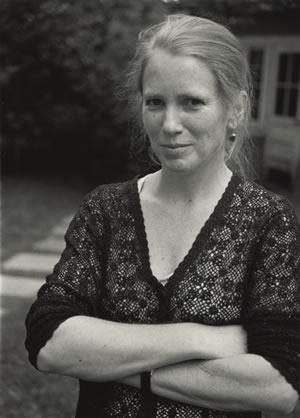Ellen Baxter
In April of 1980, the front page of the Sunday New York Times announced “36,000 Homeless People in the City.” The report, “Private Lives, Public Spaces,” catalogued a year of discussions with hundreds of the homeless in subways, parks, train stations, churches, and soup kitchens. Written by Ellen Baxter and Kim Hopper, the report addressed two main questions: Why are people homeless? How do people survive when they are homeless?
Ellen Baxter’s work with the homeless has been deeply influenced by her fellowship year in 1975 spent in the Belgian village, Geel, which is home to the shrine of St. Dympna, the patron saint of the mentally ill. The town has for centuries integrated mentally ill people into the families of townspeople. “In Geel, stigma do not exist because a tolerance had evolved over the years,” Ellen explains, “and it was there I learned that, if given the chance, the mentally ill and destitute can co-exist in community with others.”
Ellen settled in New York City in 1976 hoping to replicate Geel. She found public women’s shelters, which required gynecological exams, forced delousing, and confiscated all possessions—and regulations which kept many homeless women from seeking help. Men’s shelters often crammed as many as 1,200 men into a space designed for 200. Yellow floor stripes encircled beds of the mentally ill; red stripes indicated the mattresses of those infected with HIV.
With the support of her co-author, Kim Hopper, and a young corporate lawyer, Robert Hayes, Ellen began researching cost-effective, permanent alternatives to the shelters and SRO’s (single room occupancy flop houses) where former mental hospital patients and impoverished pensioners lived.
In 1980, two Franciscan priests converted an SRO building on 178th Street in Manhattan to housing for 100 homeless, who paid $215 per month. “St. Francis Residence I” was an experiment in supportive housing—a living situation complemented by social and mental health services. Ellen was impressed and decided to try to set up a similar residence. She found a building known as “The Heights,” but it took three years to raise the down payment and convince banks and politicians of the project’s feasibility. “No one was sure it would work,” explained Ellen. “And we weren’t either, but we were determined to try.”
In 1985, Ellen’s dream became a reality. Ellen recruited people to live at the Heights, inviting them to dinner to discuss the responsibilities of a community, and showing them the building so they could pick out their rooms. Ellen fondly recalls many of the first tenants: Stella was a heroin addict who lived in the bathrooms of the George Washington Bus terminal because a cleaning attendant gave her a key; Jimmy lived for years in the caves of Fort Washington Park and ate only discarded food and garbage; Jack was discovered deep in a Washington Heights subway station corner where the odor from massive infections on his swollen and lacerated legs gave him away. All three tenants of the Heights left their mark on Ellen. “Stella was one of the most generous survivors, demanding, yet kind and aware of her rights.” The second building, opened in 1988, was named the Stella.
The Broadway Housing Development Fund, the non-profit corporation Ellen founded, now owns five buildings in Washington Heights housing 220 formerly homeless people. The success of this supportive housing depends on tenants’ taking responsibility for their building. “Tenant patrols” work the front door, sign in visitors, fix telephones, repair appliances, and settle problems. The message is clear: “You live here; you take responsibility so that the ways of the streets don’t enter here.” In each building, fifty tenants split fifteen shifts a day, seven days a week. Nearly one quarter of the 220 tenants participate in the tenant patrols and are paid for their work, which allows many to go off welfare.
On a typical day, Ellen resolves conflicts between residents, monitors tenant patrols, solicits donations, and coordinates the Center for Urban Community Services, which provides social services to the tenants. She overcomes political obstacles with a steely determination, drawing on the support of other homeless advocates. Bob Hayes found a Depression-era provision in the New York Constitution requiring the state “to provide food, shelter, clothing for the destitute and the needy.” A series of lawsuits in New York City has brought improvements to the care of the homeless, budget increases from $3 million to $30 million a year, and court orders to find more housing. But court decisions do not address how to house homeless folks in a cost-effective, permanent, and humane way.
Supportive housing is the least costly and the most effective way of creating stable, productive lives. In New York City, a prison cell costs $60,000 annually; a psychiatric bed, $113,000; and a shelter cot, $20,000. A supportive housing bed costs only $12,500 and residents receive the support they need to begin to reconstruct their lives, support that isn’t available in a shelter or psychiatric ward. Within the network of advocates for the homeless in New York City, Ellen Baxter is buoyed by “the spirit and determination of individuals recovering from homelessness.”
www.broadwayhousing.org
 Photo by Dorothea von Haeften
Photo by Dorothea von Haeften